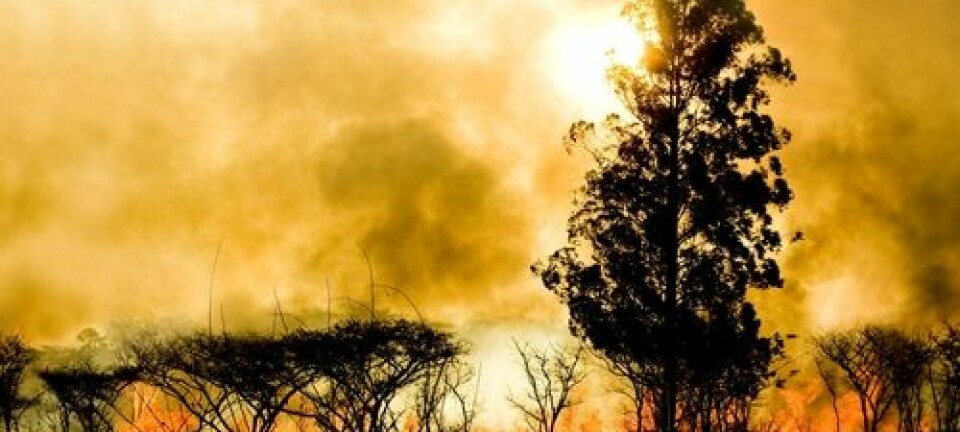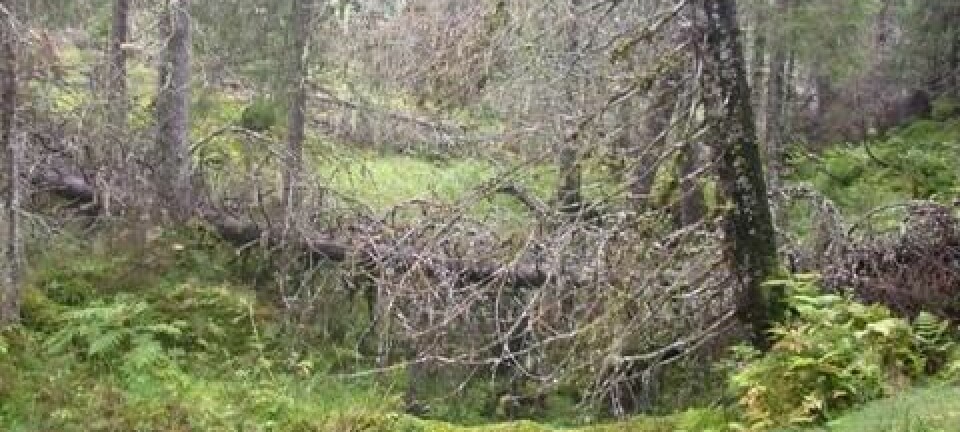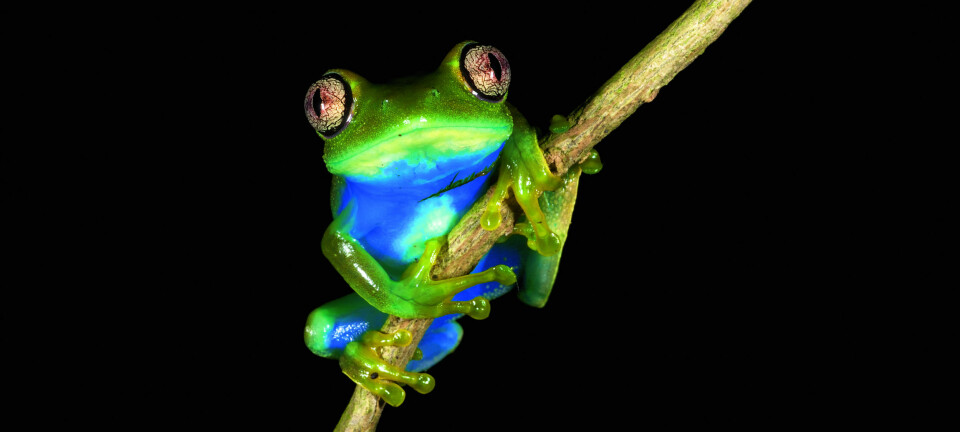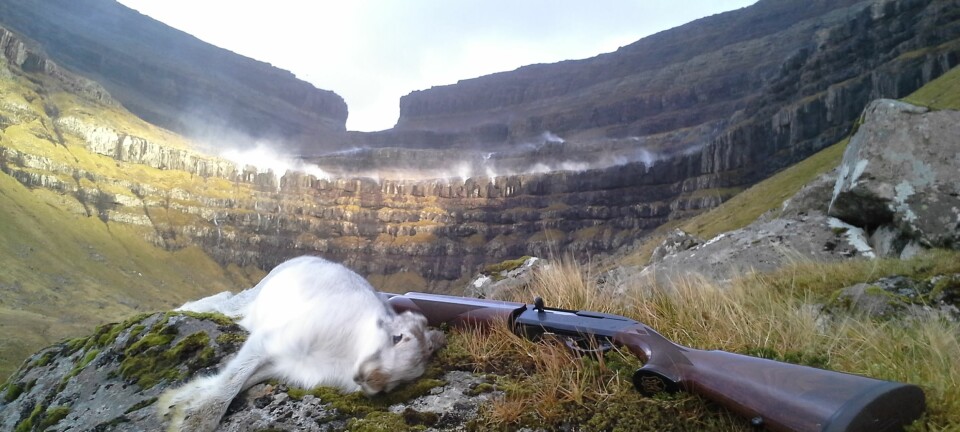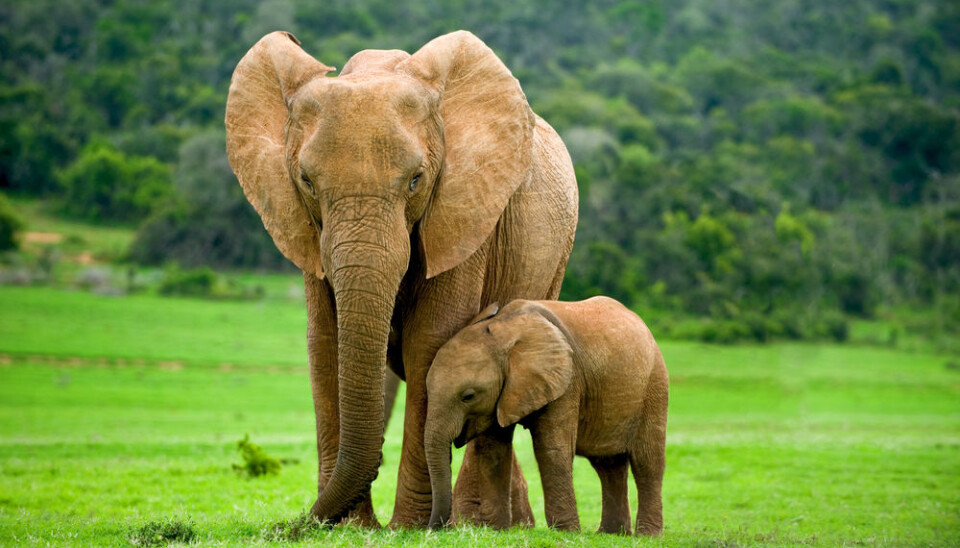
Large animals have removed 80 per cent of forests
Without large animals such as elephants, deer, and bison, much of the world would quickly return to forest, shows new research.
The difference between open savannah and dense forest can be attributed to the presence of large animals.
That is the conclusion of a new study, which has compared the spread of trees and shrubs with the presence of large animals.
In the study, scientists collected all available data on vegetation and the number of large animals in African nature reserves and parks elsewhere, such as Yellowstone in the US.
They also considered studies of what happens when natural areas are fenced off to keep out large animals. The result was clear.
"Our research clearly shows that the more large animals there are in an area, the less dense the vegetation becomes,” says co-author Professor Jens-Christian Svenning, with the Department of Bioscience, Aarhus University, Denmark.
“Vegetation type is important for the animals that can live in an area, and thus the presence of large animals has an impact on biodiversity in general," he says.
"This must be taken into account when managing natural landscapes, and when the amount of large animals in a area falls due to human activities, such as hunting or turning over wild areas for agriculture," says Svenning,
The results are published in a special issue of the scientific journal PNAS.
Large herbivores are important for dynamic processes
Postdoc Jonas Geldmann, who studies nature conservation at the Natural History Museum, University of Copenhagen, Denmark, describes the results as interesting.
"The study brilliantly collects together the information that we have regarding the importance of large animals on the landscape,” says Geldmann.
“It also points out that if you want to reintroduce certain dynamic processes into [the natural environment] we need the large herbivores, which we don’t have today," he says.
Elephants remove tons of trees
To find out how large animals affect the landscape around them, Svenning and his team collected the results of published studies to calculate which animal species are important for the loss of trees and bushes around the world.
They found that elephants in particular have a huge impact on the landscape.
"These large animals account for more than 80 per cent of the removal of trees and shrubs in the areas they inhabit. So elephants often create open spaces around them," says Svenning.
Savannah is different in South America
The precise effect that elephants and other large animals have on vegetation was illustrated in another study, which Svenning and his colleagues recently published in the scientific journal Ecography.
They compared the savannahs in Africa with those in South America, and saw that savannahs in Brazil, Argentina, and Venezuela, have many more trees than those in Africa.
Svenning explains this difference by the fact that Africa is still home to a range of large animals, whilst similar large animals, such as elephants and giant sloths, have long since become extinct in South America.
"It’s an example of how a manmade shortage of large wild animals is of great importance in determining how the landscape looks today," says Svenning.
Britain's countryside: dramatically changed
Svenning and his team also compared how nature looks today and how nature might have looked, had it not been for human influence.
They summarise how ecosystems have changed with the loss of large animals due to the expansion of modern human societies across the world.
One example is how Britain changed when humans moved in after the last interglacial period.
Britain, 125,000 years ago, was home to elephants, rhinos, deer, hippos, and buffaloes. Fossils from the period show how these large animals created a landscape dominated by open areas, with few forests, similar to the African savannahs today.
Past landscape was perhaps not entirely dominated by forest
When humans arrived in Britain after the Last Ice Age, around 12,000 years ago, things started to change.
Populations of large herbivores began to fall, and open areas grew into dense forest.
According to Geldman it is an interesting perspective.
"I think it breaks a bit with the general notion that ancient landscapes were dominated by forest. There may’ve been more open areas than we think," he says.
Increases the amount of CO2 in the atmosphere
The lack of large animals may also have a bearing on certain tree species, which depend on these animals to spread their seeds.
In another study, published in the scientific journal Ecography, Svenning and his team showed that elephants have a role to play in helping large fruit bearing trees to spread out.
The elephants eat the fruits and pass the seeds through their dung, often dumping the seeds far from the parent tree.
Similar trees in the Amazon are far less widespread, precisely because they don’t have the help of such large herbivores to spread their seed.
“These trees are also generally good at accumulating CO2. Therefore, the effect of losing animals in South America could also mean that the Amazon soaks up less CO2 from the atmosphere,” says Svenning.
---------------
Read the Danish version of this story on Videnskab.dk
Translated by: Catherine Jex
Scientific links
- "Combining paleo-data and modern exclosure experiments to assess the impact of megafauna extinctions on woody vegetation", PNAS (2015), DOI: 10.1073/pnas.1502545112
- "The impact of the megafauna extinctions on savanna woody cover in South America", Ecography, DOI: 10.1111/ecog.01593
- "Megafauna extinction, tree species range reduction, and carbon storage in Amazonian forests", Ecography, DOI: 10.1111/ecog.01587
- "High herbivore density associated with vegetation diversity in interglacial ecosystems", PNAS, DOI: 10.1073/pnas.1311014111
